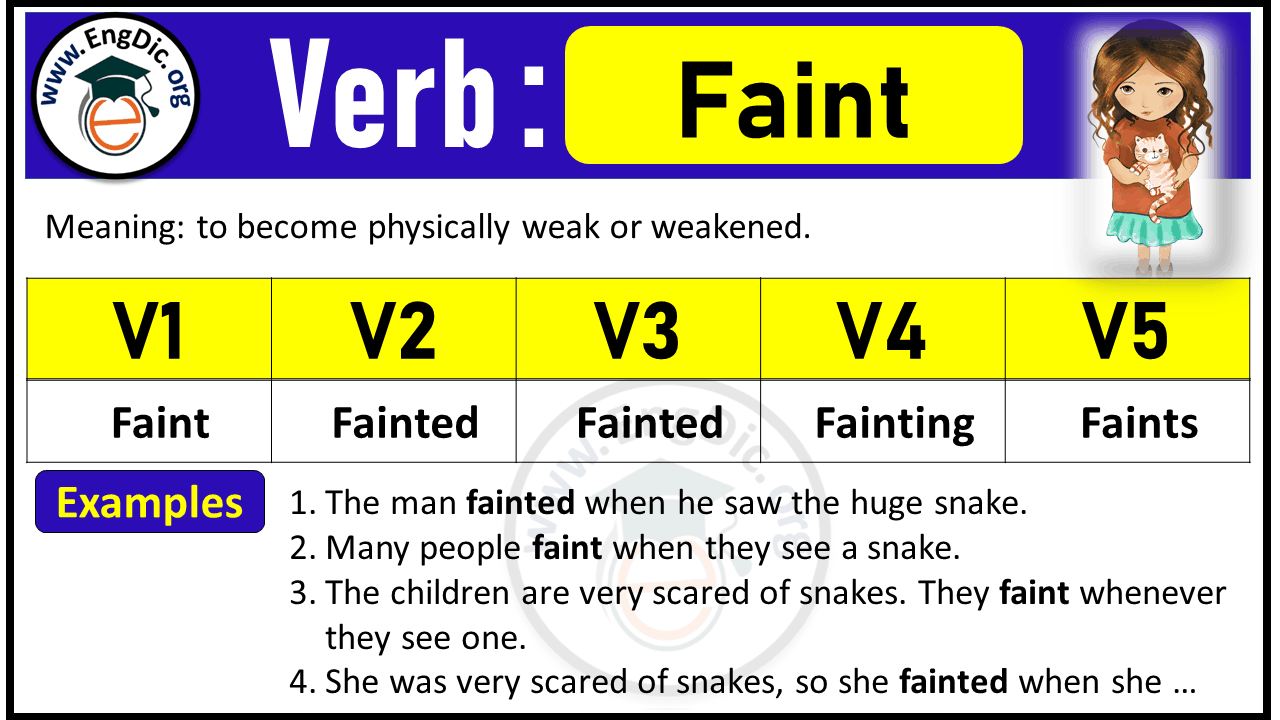Faint Past And Past Participle Form V1 V2 V3 V4 V5 Form of Faint
Have you ever found yourself puzzled about the different forms of the verb “faint”? If so, you’re not alone.
Understanding verb forms is essential for mastering any language, and English is no exception. The verb “faint” might not be as commonly discussed as “run” or “write,” but its forms are just as important. By the time you finish reading this article, you’ll have a clear grasp of the past and past participle forms of “faint,” as well as its V1, V2, V3, V4, and V5 forms.
Imagine the confidence you’ll gain when you can effortlessly use these forms in your writing and conversations. Ready to boost your language skills and eliminate any confusion? Let’s dive in!

Credit: www.pinterest.com
Verb Forms Of Faint
The verb fainthas different forms. It is important to know these. The base form is faint(V1). The past simple form is fainted(V2). The past participle is also fainted(V3). The present participle is fainting(V4). Finally, the third person singular is faints(V5).
These forms help us use the verb in different tenses. Faintmeans to fall unconscious. It is used in many contexts. For example, “She faints from the heat.” Knowing these forms helps in writing and speaking. It also aids in better understanding.
Usage In Sentences
The word faintis often used to describe losing consciousness. For example, “He might faintin the hot sun.” This verb can change form. “Yesterday, she faintedat the park.” When used as a past participle, it becomes “He has faintedbefore.” You might also hear, “She is faintingnow.” Lastly, “They will faintif scared.”
Common Mistakes With Faint Forms
Many people mix up the forms of faint. Let’s explore them. The base form is faint. The past form is fainted. The past participle form is also fainted. The present participle form is fainting. The third person singular form is faints.
Errors often happen with faint forms. Some use faint instead of fainted. Others mix fainting with fainted. It’s important to use the right form. This helps in clear communication.
| Form | Usage |
|---|---|
| V1 | Faint |
| V2 | Fainted |
| V3 | Fainted |
| V4 | Fainting |
| V5 | Faints |
Keep this table handy. It will help avoid mistakes. Practice using these forms. Make sentences with each form. This builds confidence and skill.

Credit: englishstudyhere.com

Credit: engdic.org
Conclusion
Understanding the forms of “faint” enhances your English skills. Each form—V1, V2, V3, V4, and V5—serves a purpose. Knowing when to use them helps in daily conversations. Practice regularly to improve your fluency. Remember, learning a language takes time. Be patient and keep practicing.
Errors are part of learning. Don’t let mistakes discourage you. With dedication, your confidence will grow. Soon, you’ll use these forms naturally. Keep exploring and learning new words. Your effort will pay off. Stay curious and enjoy the journey of language learning.






